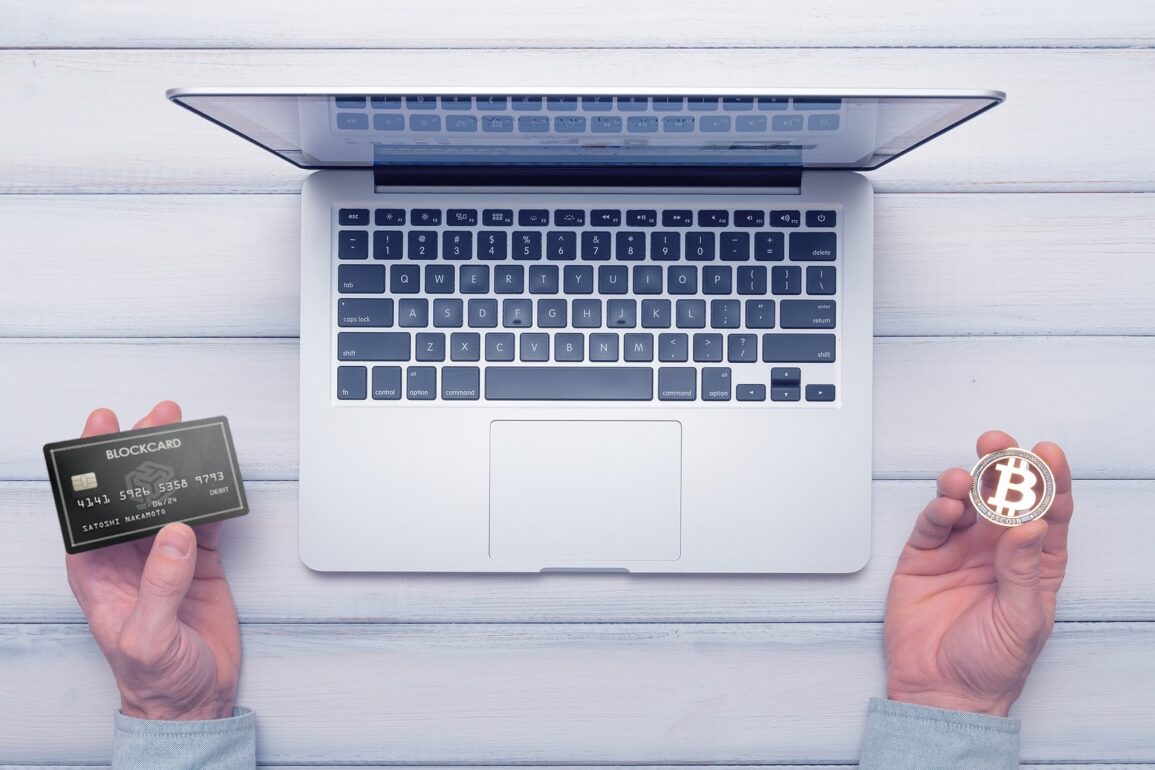Bitcoin debits cards are popular among digital currency holders who want to purchase goods and services using cryptocurrency.
In this article, you will learn what bitcoin debit cards are, how they work, and how you can get one.
What are Bitcoin Debit Cards?
Bitcoin debit cards are prepaid debit cards that allow you to top up your card using cryptocurrency and spend in fiat currency anywhere where card payments are accepted.
Bitcoin prepaid debit cards act as a bridge between traditional card payments and cryptocurrency. They enable bitcoiners to spend digital currency at retailers that don’t accept bitcoin. Moreover, they allow bitcoin users to convert their digital currency into fiat currency and withdraw cash at any ATM across the country.
The first-ever bitcoin debit card was launched in 2015. Since then, dozens of crypto debit card providers have entered the fold to service this growing market segment. As bitcoin adoption continues to grow globally, we can also expect bitcoin debit card usage to increase in the coming years.
How Do Bitcoin Debit Cards Work?
Bitcoin debit cards function effectively in the same way as “traditional” prepaid debit cards. The key difference is that you fund your card with bitcoin or other cryptocurrencies.
| Traditional Prepaid Debit Card | Bitcoin Debit Card | |
| ATM Withdrawals | ✔ | ✔ |
| Globally Accepted | ✔ | ✔ |
| In-Store Card Payments | ✔ | ✔ |
| Shop Online | ✔ | ✔ |
| Top Up Using Cryptocurrency | X | ✔ |
| Store Funds in Multiple Currencies | X | ✔ |
Every bitcoin debit card comes with a digital wallet where you can store your bitcoin. The wallet can be mobile or web-based, depending on the card issuer.
To top up your card so that you can spend in fiat currency, you need to send bitcoin to your card-linked bitcoin wallet. As soon as the funds have arrived, you can start spending.
The crypto-to-fiat currency conversion occurs in the background and generally happens automatically when you make a card purchase.
Physical vs. Virtual Crypto Debit Cards

Bitcoin debit cards can come in two forms: physical or virtual.
A physical bitcoin debit card is a physical card that you can carry with you everywhere you go. Physical cards enable you to make in-store bank card payments using cryptocurrency. Moreover, they allow you to withdraw cash from any ATM in the world.
Virtual bitcoin debit cards, conversely, are only available online. They enable you to make card payments when you shop online. Using a virtual bitcoin debit card, you can book a flight, purchase a book on Amazon, or buy groceries online.
Pros & Cons of Bitcoin Debit Cards
Now that you know how digital currency debit cards work, let’s look at their pros and cons.
Pros
- You can pay “everywhere” with crypto
- You can pay in different currencies
- Simple crypto-to-fiat conversion
The biggest selling point of bitcoin debit cards is that they enable you to spend cryptocurrency anywhere in the world and in any store where bank card payments are accepted. Bitcoiners who use digital currency on a day-to-day basis are, therefore, no longer constrained to spending at merchants and retailers that accept bitcoin. Now, they can spend bitcoin effectively everywhere.
Additionally, bitcoin debit cards enable you to spend your cryptocurrency in different fiat currencies. Many crypto debit card providers allow you to spend in USD, GBP, and EUR. But even when you use single currency cards, you can still pay in any other global currency as the card payment processing company will convert your fiat currency payment into local currency.
Bitcoin debit cards also enable you to easily convert your cryptocurrency into fiat currency. Cashing out of crypto into fiat is not always an easy feat and, depending on your location, may also incur high fees. When topping up your crypto debit card with digital currency, you can easily and automatically convert your crypto to fiat at a low conversion cost when you make a payment.
Cons
- Cryptocurrency price fluctuations
- Centralization risk
- Potential tax event
While bitcoin debit cards have several benefits for digital currency users, there are also a handful of drawbacks.
Arguably the biggest challenge for bitcoin debit card users is the price volatility of digital currencies. If you are topping up your debit card-linked crypto wallet with, for example, $500 worth of bitcoin that you plan to spend in the coming week, there is a chance that the price of bitcoin drops in the following days and your purchasing power will be reduced. Moreover, when you are topping up your debit card with altcoins, price volatility is even more of an issue. Having said that, you could convert your bitcoin into a stablecoin before topping up your card to ensure that volatility will not be an issue.
There is also a degree of centralization risk because you need to store your funds in a company-issued digital wallet, which means you need to trust the company with your money. Therefore, you need to make sure you choose a reputable bitcoin debit card issuer that has taken all the necessary steps to protect your funds.
Finally, depending on your jurisdiction and how you acquired your digital currency, spending it may result in a taxable event. Therefore, you need to check the potential tax implications that converting digital currency into fiat currency may have in your jurisdiction before making bitcoin card purchases.
How Can You Get One?
If you want to start spending cryptocurrency anywhere where bank cards are accepted, grab a BlockCard today.

BlockCard enables you to spend bitcoin, litecoin, and ten other cryptocurrencies. It only takes minutes to get started. All you need to do is register, pass KYC, add funds, and you are ready to start using your virtual crypto debit card. BlockCard also allows you to pay with cryptocurrency using Apple Pay, Google Pay, and Samsung Pay.
Convert cryptocurrency into real-world utility and have more control over your money than ever before. Register for a BlockCard account today to get started!





